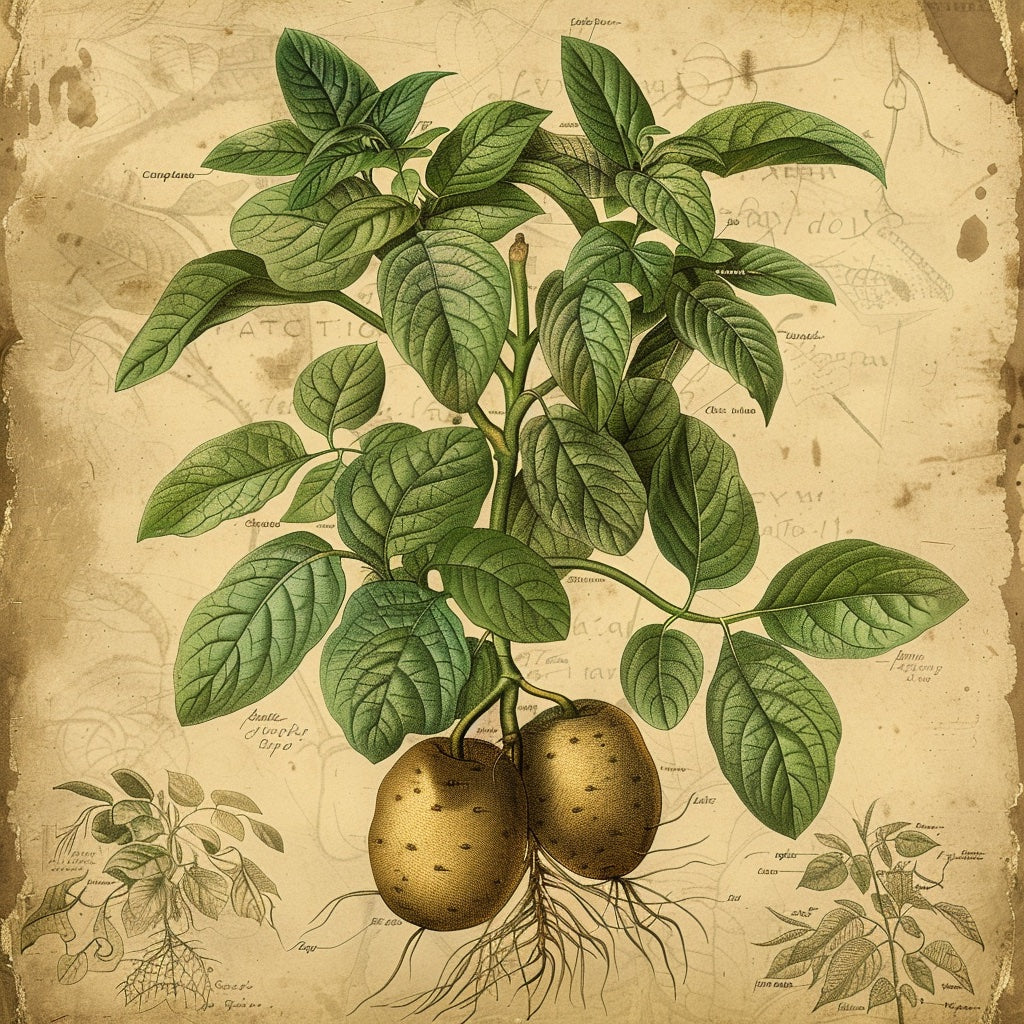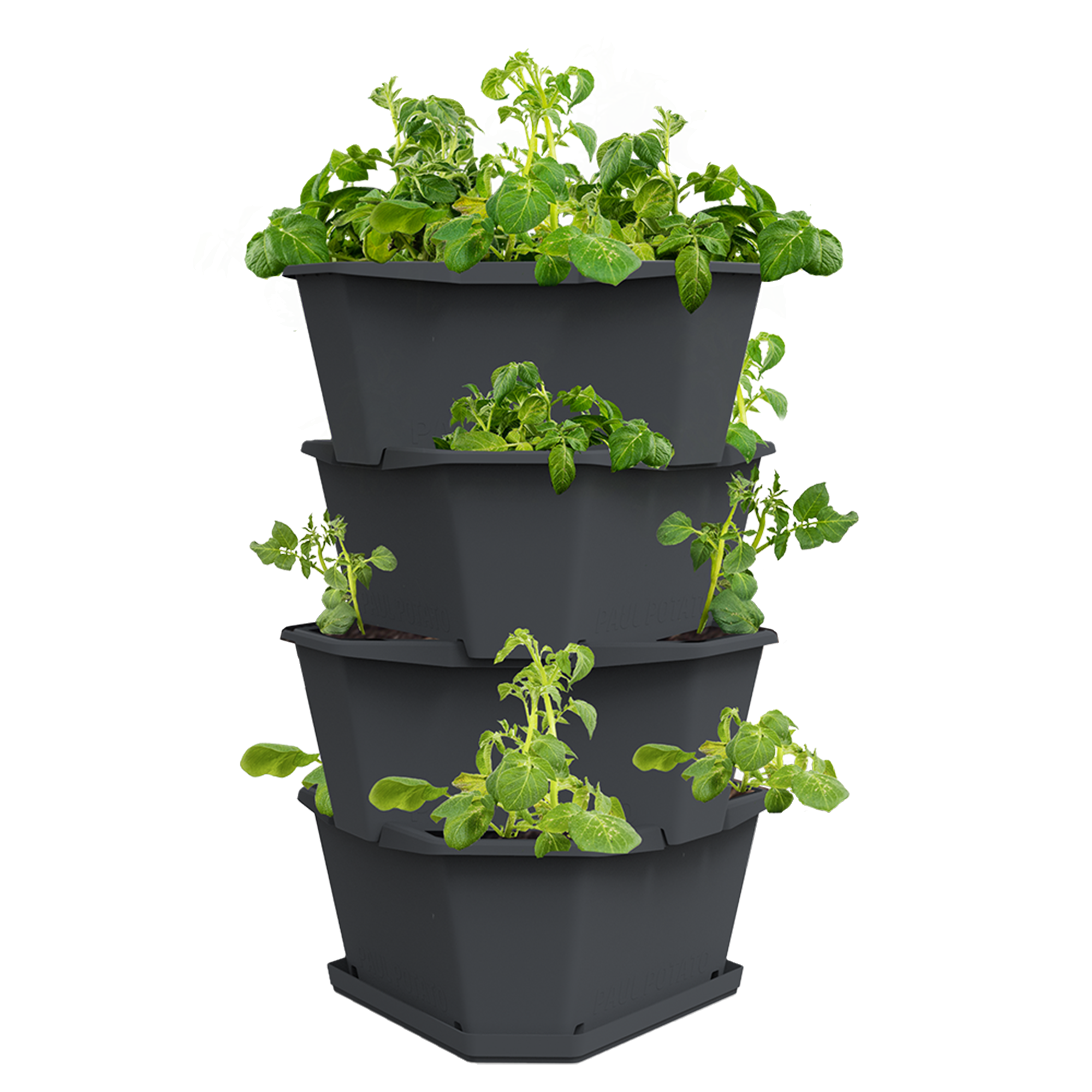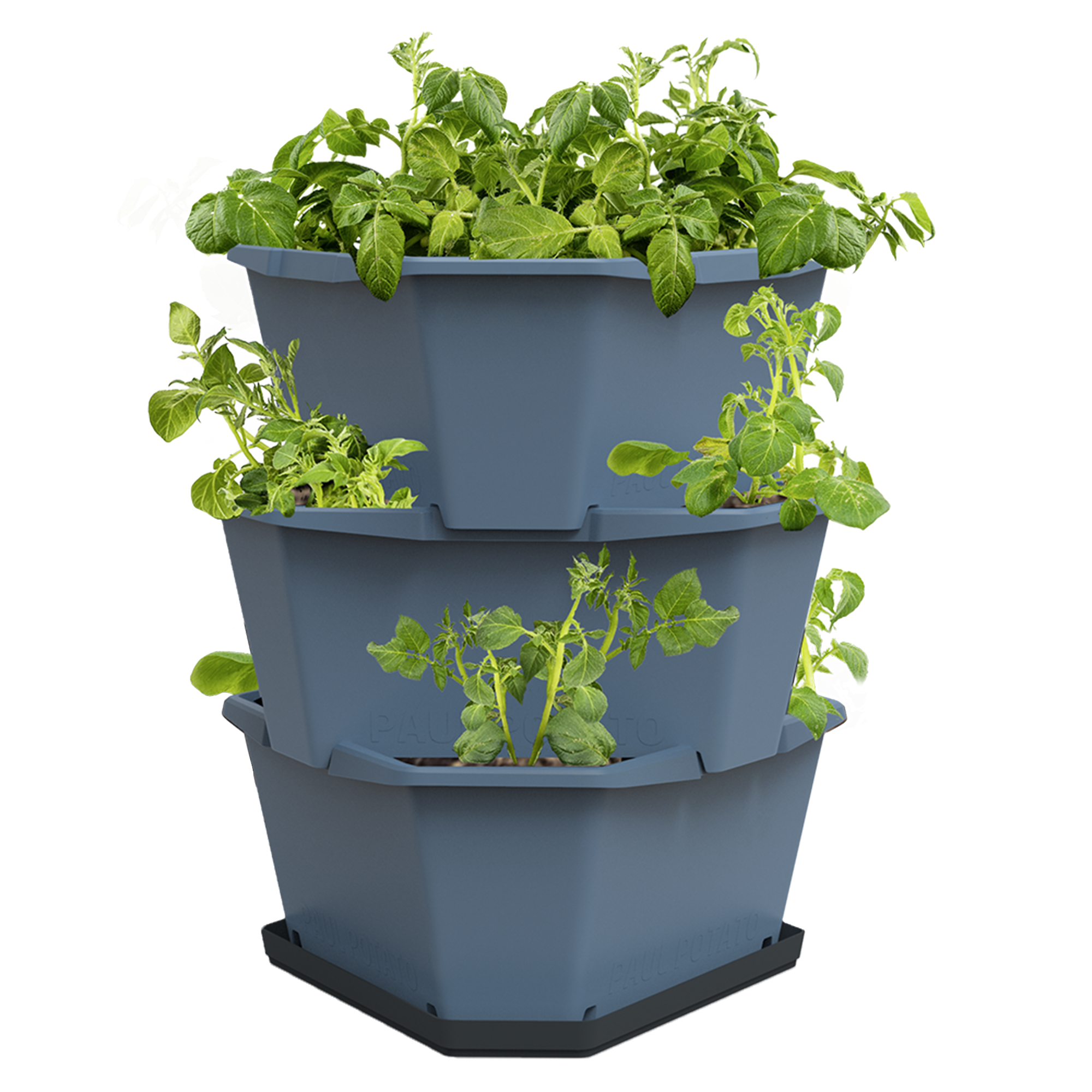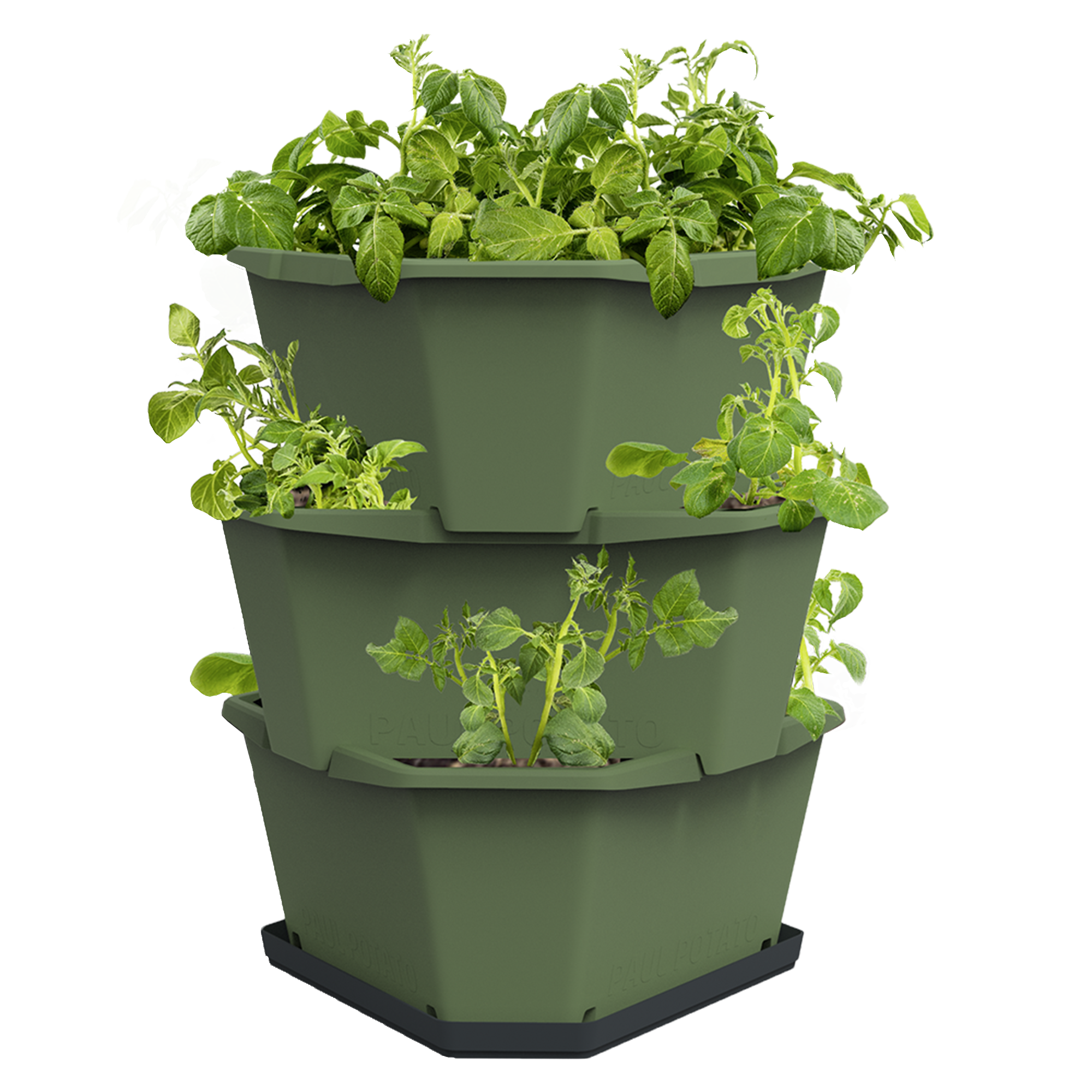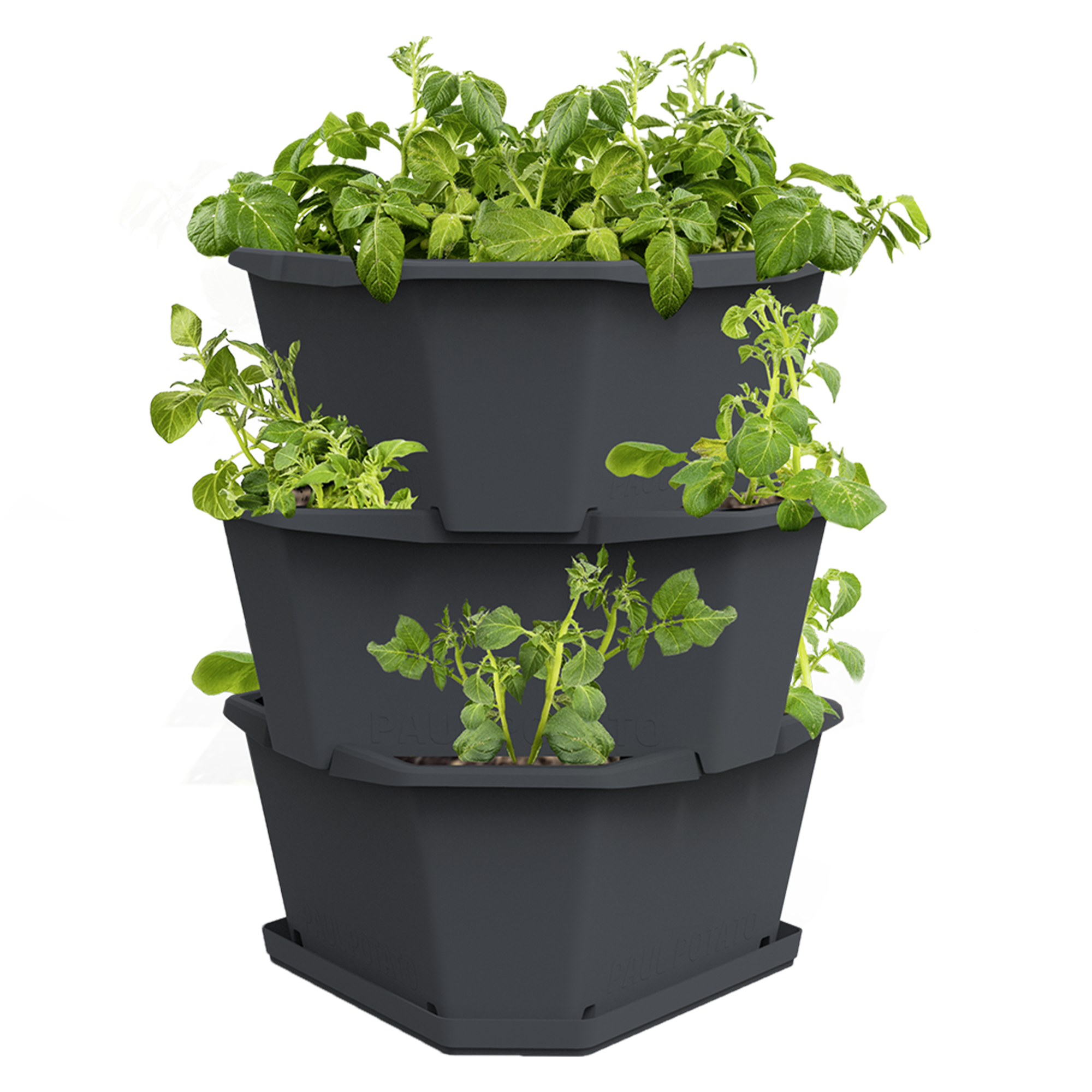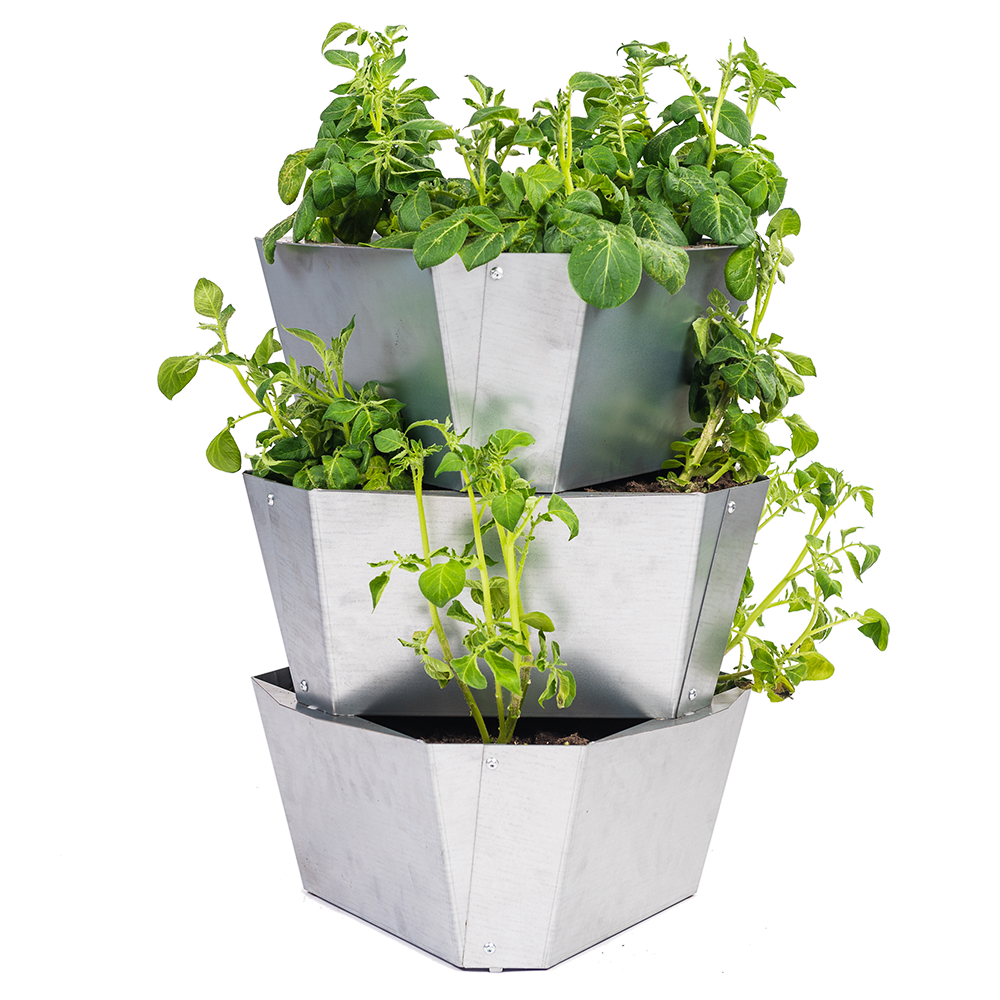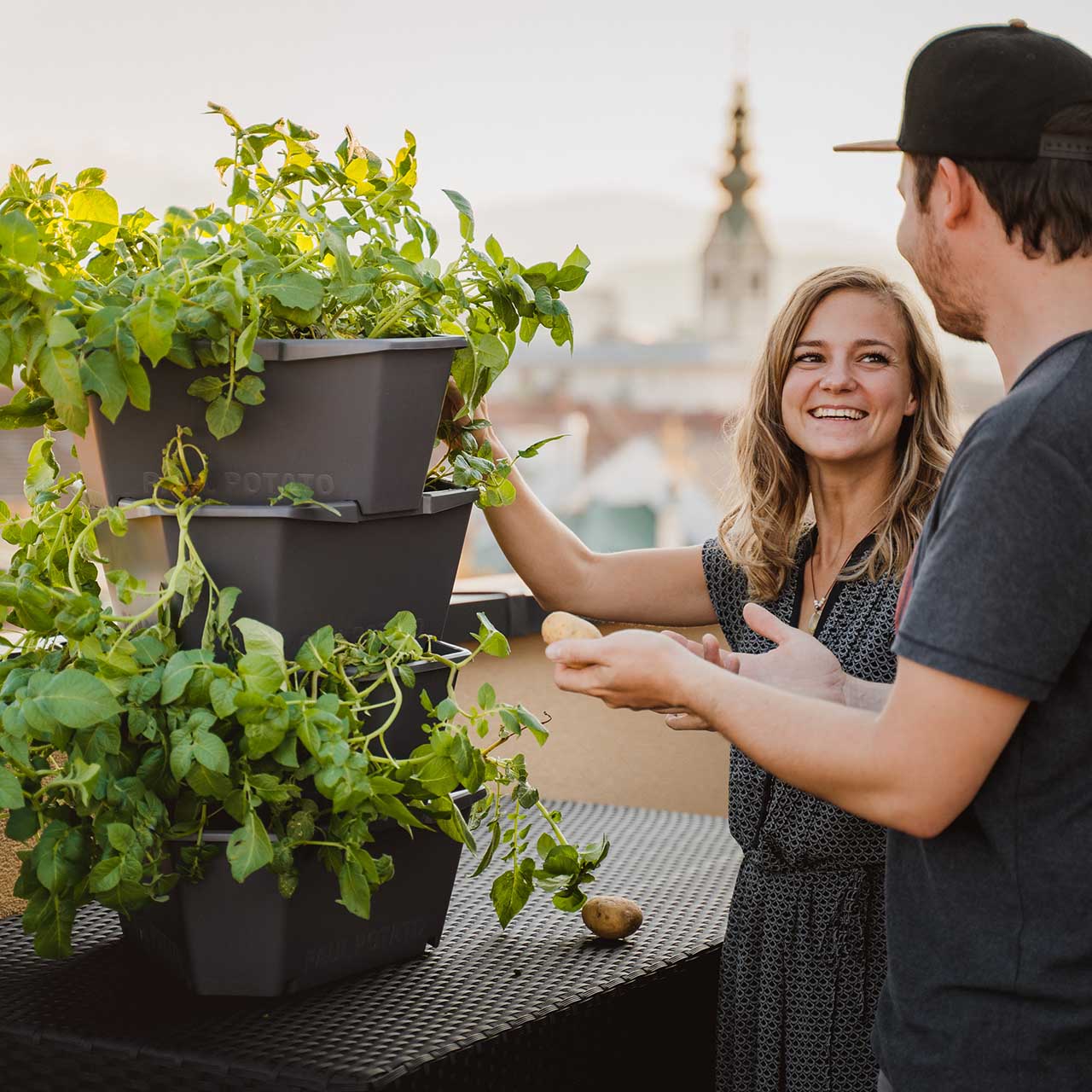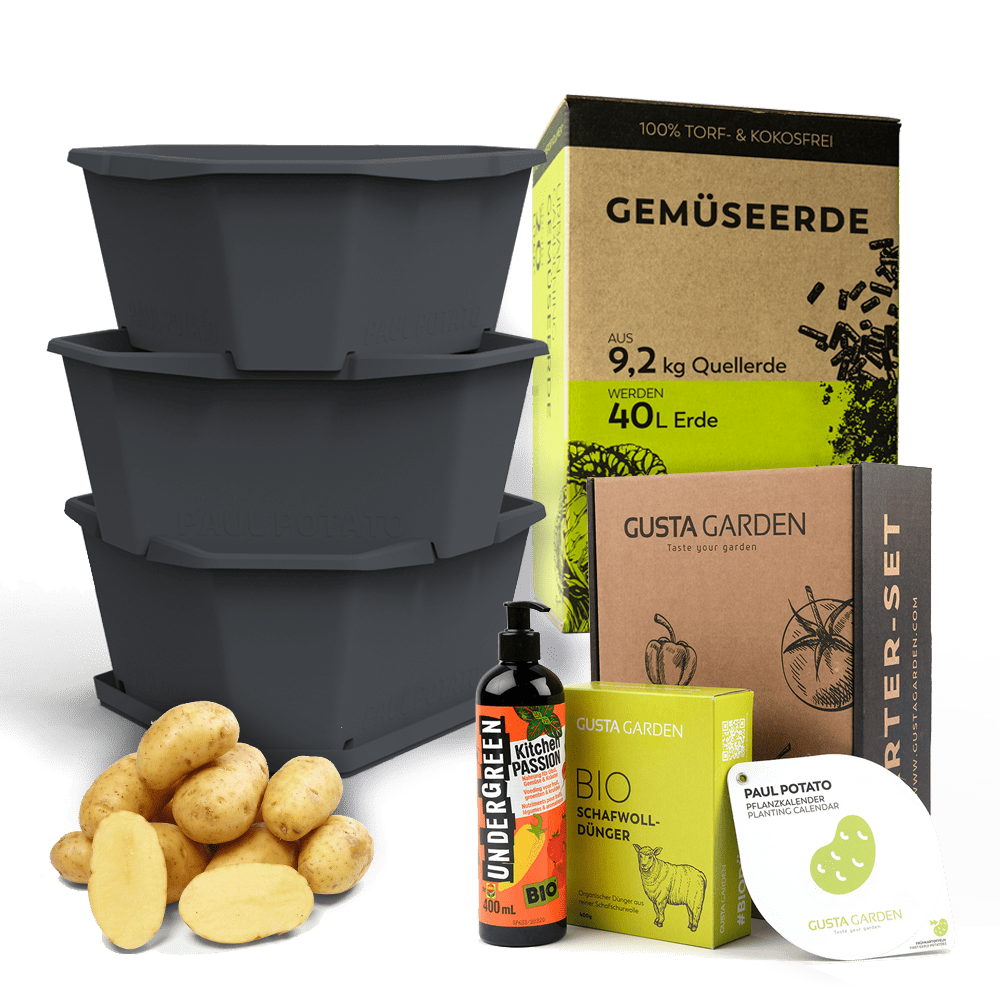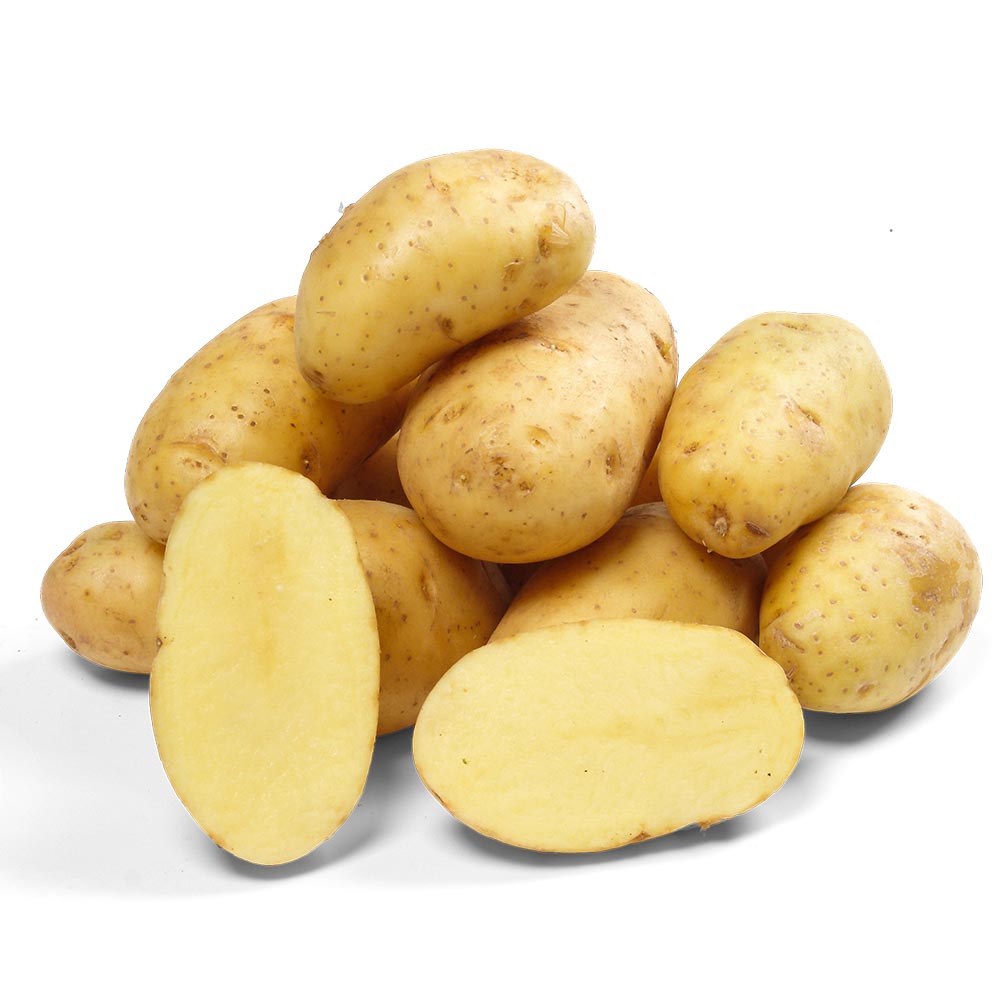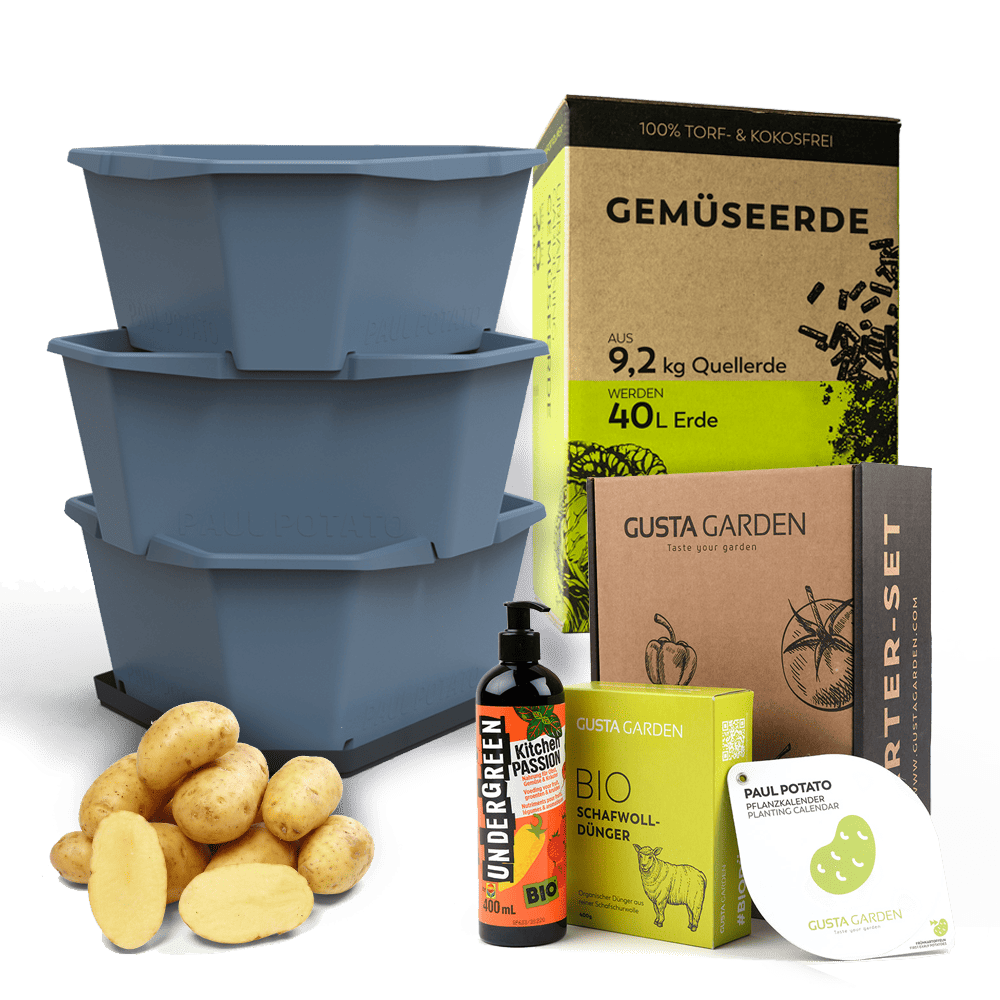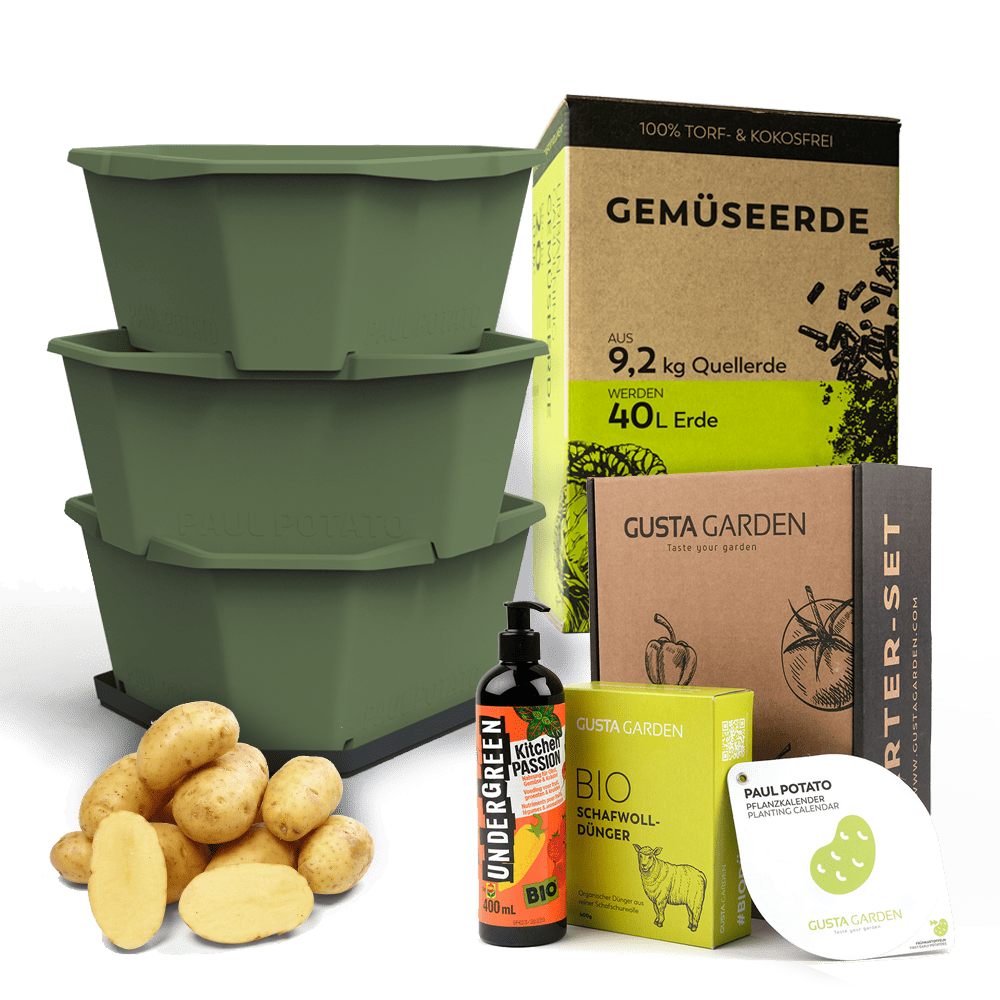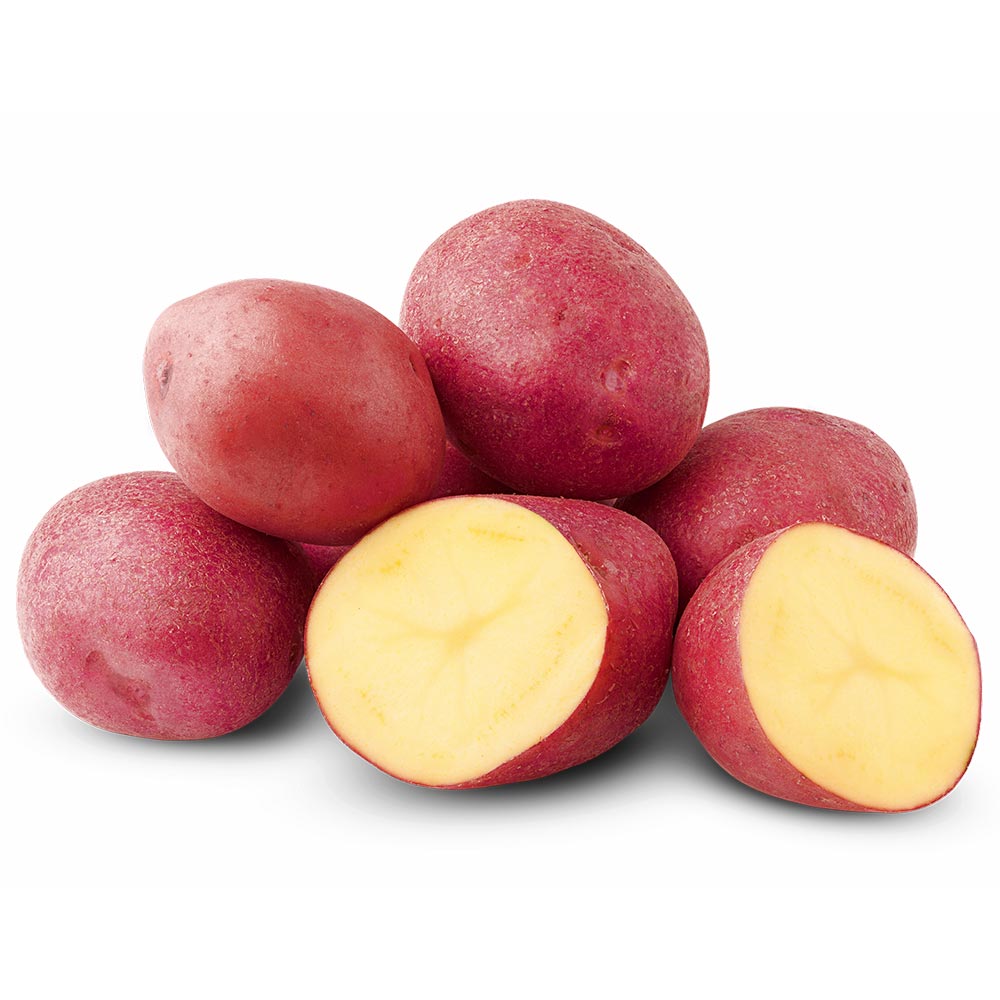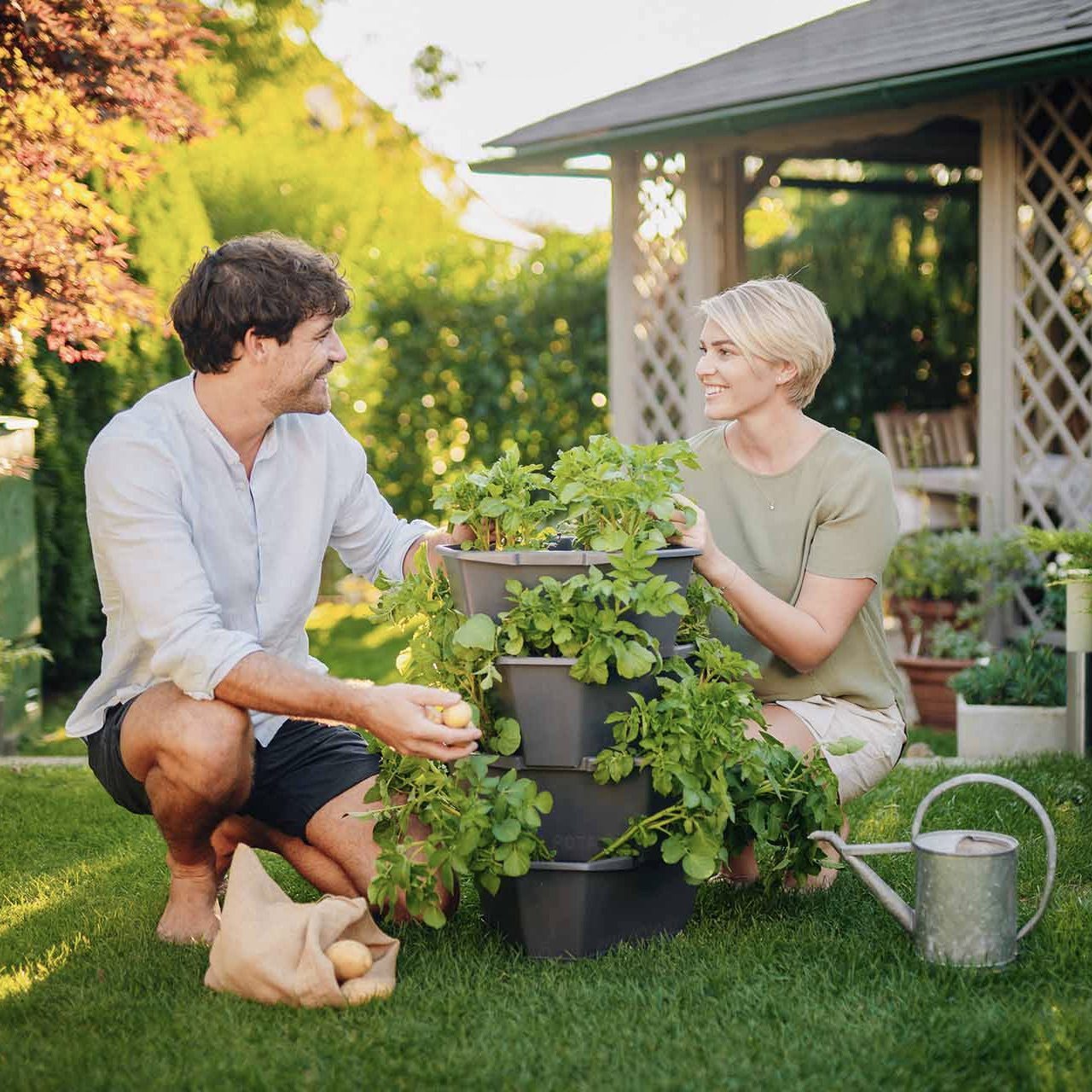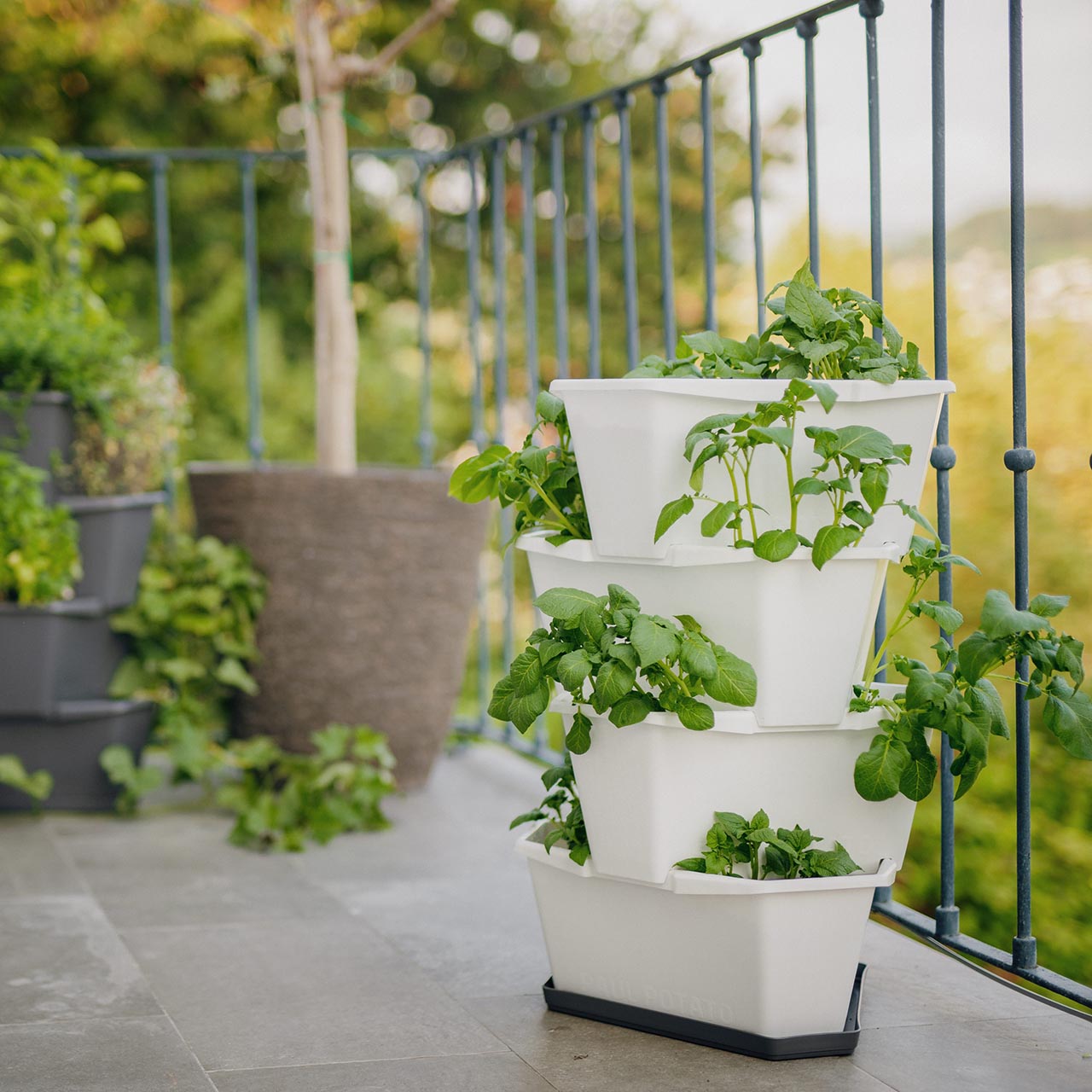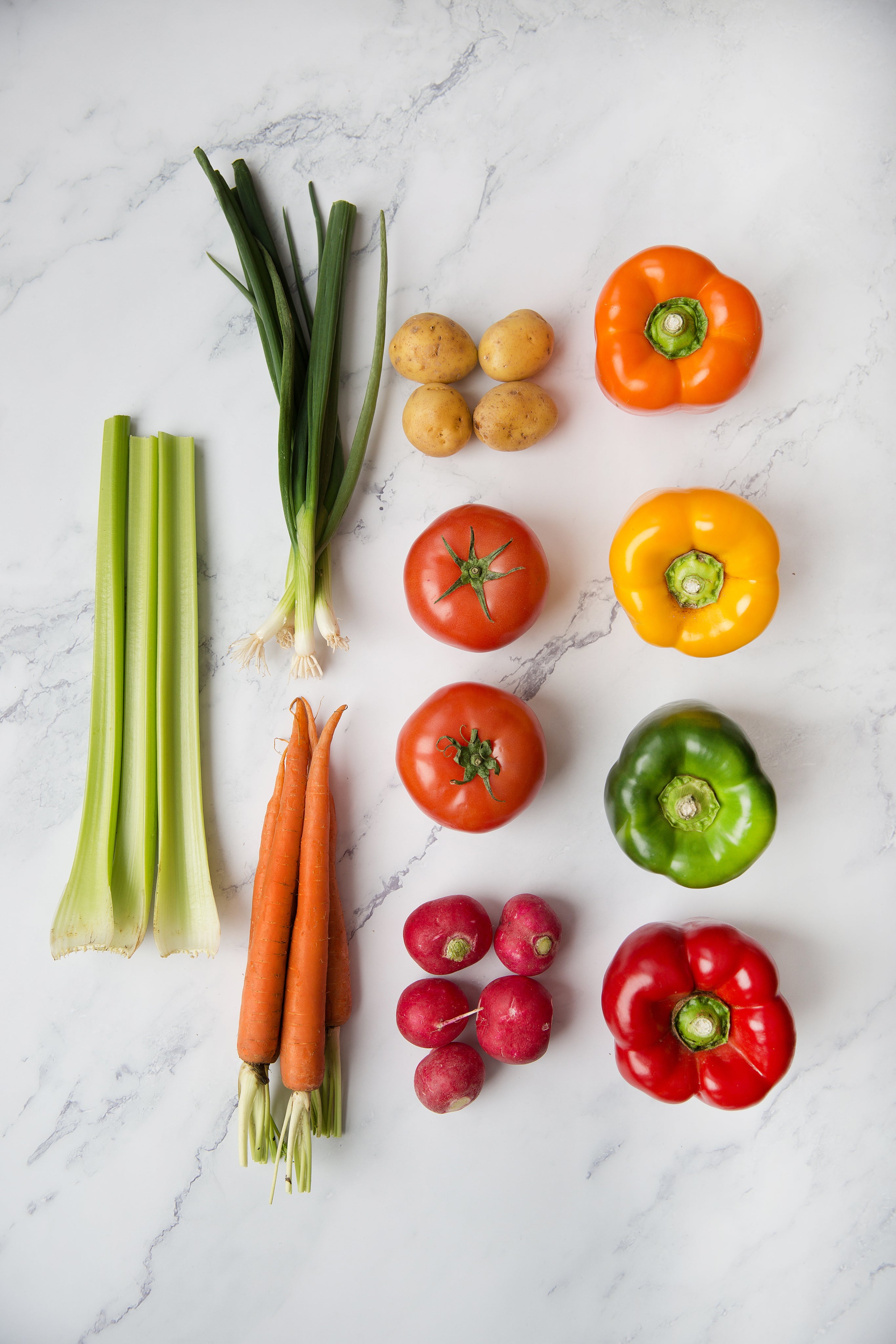
The potato... or also called pomme de terre, patata, burgonya, potet or potato, comes from the nightshade family. This makes it closely related to peppers, tomatoes and eggplants.
useful information
Did you know that every German & Austrian citizen eats an average of 55kg of potatoes every year? That the oldest finds of a potato plant are around 13,000 years old? Or that in addition to the classic yellow potatoes, there are also red, pink and purple potatoes?
While potatoes had long been cultivated as a staple food among the Incas in the Andean highlands, they only found their way to Europe in the middle of the 16th century . Sailors brought the first potatoes from South America to Europe and thus also to Germany and Austria. In the early days after its introduction to Europe, not everyone realized that only the underground tubers of the potato were edible and that all green parts of the plant were inedible and slightly poisonous. Since the 18th century at the latest, potatoes have become an integral part of both fine and home-style cuisine.
The potato is not only one of the most important staple foods in Europe, but also a healthy source of carbohydrates. In recent years, carbohydrates have become increasingly disreputable. But one thing is certain: the bad reputation is definitely not due to the nutrient-rich potatoes. Potatoes are rich in fiber and keep you full for a long time because the complex carbohydrate chains can only be digested slowly. In addition, with only 69 kcal per 100g, they have much fewer calories compared to other side dishes such as pasta, rice, etc. In addition to carbohydrates, they also contain high-quality proteins and score with a considerable amount of B and C vitamins. In addition, 15 other minerals and trace elements were detected in them.
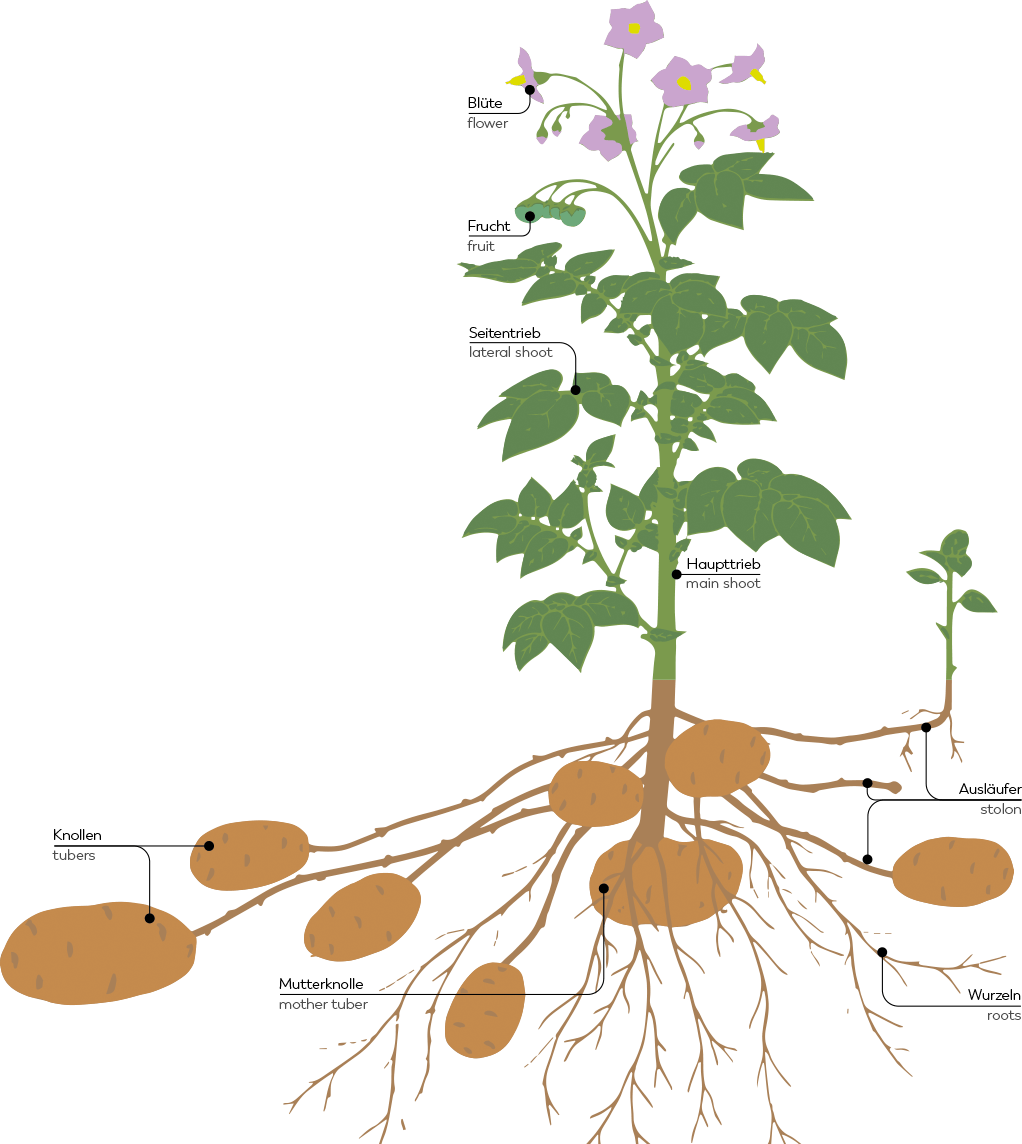
sorts

With over 4,000 different types of potatoes worldwide, choosing the right one for your own cultivation is certainly not easy. Potato varieties are differentiated according to their cooking properties and how long they ripen during cultivation. Basically, all varieties can be optimally grown in PAUL POTATO on the balcony, terrace or in the garden. You can find out more about the different types of potatoes here .
The tuber
After the mother tuber has developed a root system and leaves from the shoots, the potato plant proceeds to tuber formation. This phase depends on the variety and the weather and is crucial for the final tuber yield. The plants need a lot of sunlight, especially in this phase. For this reason, make sure to place your PAUL POTATO in a sunny, warm place. Depending on the variety, around 15 – 25 potatoes can be harvested from one tuber per year.
storage
The later in the year potatoes are harvested, the longer they last. Late varieties can be stored at room temperature for around three to four weeks. Potatoes are best stored in a cool, dark and dry place. In addition, you should avoid placing the tubers in the immediate vicinity of apples and pears, as they release ethylene, which causes the potatoes to ripen faster. With PAUL POTATO you already have an optimal container for storage. Simply place your potatoes on a tier of PAUL POTATO and use the saucer as a lid. This ensures that no light reaches your harvest and the tubers can be stored for a particularly long time.
Further processing

Fried, baked, as chips, puree, salad, on the grill or simply boiled - potatoes can be prepared in so many different ways that it is hardly surprising why they are the most popular side dish. Tip: Especially colorful varieties that you don't normally get in the supermarket are guaranteed to bring variety to your plate in any form of preparation. You can find many delicious potato recipes below ⬇️
Recipes
for your freshly harvested tomatoes can be found here .
